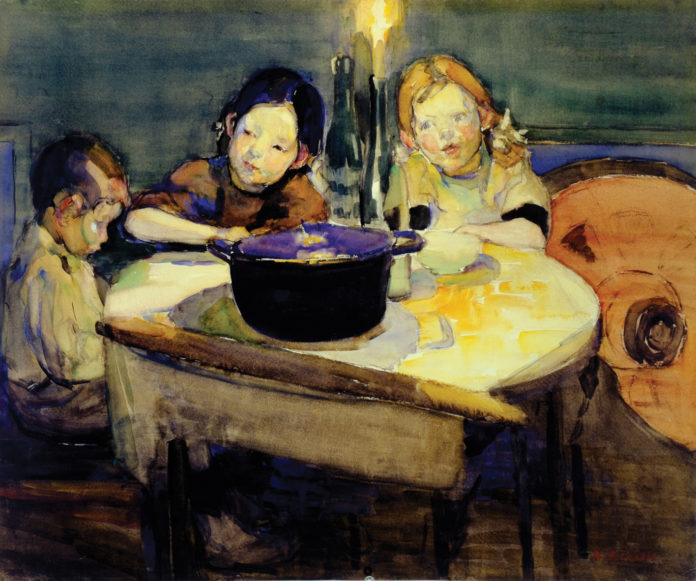
Critics admired Schille as a master watercolorist and lauded her flair for movement, light, and color. Learn more about the artist here.
Columbus, Ohio
Columbusmuseum.org
through September 29
The Columbus Museum of Art’s (CMA) exhibition In a New Light: Alice Schille and the American Watercolor Movement showcases the Columbus native Alice Schille (1869–1955) and celebrates the 150th anniversary of her birth. More than 50 works, many of which have not been exhibited for decades, comprise the exhibition, on view through Sept. 29, 2019.
In 1897 Schille traveled to New York to study with William Merritt Chase, who admired her so much that he traded one of his own paintings for it, and later purchased another. Just seven years after completing her studies in Columbus, she was exhibiting nationwide and becoming an influential teacher. Critics admired Schille as a master watercolorist and lauded her flair for movement, light, and color. Though she incorporated elements of post-impressionism, fauvism, and cubism, her work always remained figurative.
After her death in 1955, Schille’s name became less known. Today, scholars are re-examining the watercolor movement, so women like Schille are finally receiving recognition for their contributions.
One of the most celebrated American watercolorists of the 20th century, Schille was largely forgotten after WWII until recent scholarship revealed her overlooked creative brilliance. She earned acclaim from critics and fellow artists across the United States and Europe at a time when becoming an acknowledged professional artist was a particularly challenging path for women. Her subjects were often beach and harbor scenes, landscapes and city marketplaces, painted in pure-wash watercolor with modern compositions and Fauve color she had observed firsthand in Paris. She was praised for her ability to infuse bold compositions with movement and light.
“Ambition and remarkable skill were required for any artist to succeed on a national scale, but particularly for an unmarried woman from a small city in the Midwest,” said Tara Keny, guest curator of the exhibition and the Modern Women’s Fund curatorial assistant in the Department of Drawings and Prints at The Museum of Modern Art. “Alice Schille’s remarkable aptitude for watercolor, her intellect and her passion for the arts contributed to her lifelong success. She was really a wonderfully curious, talented and tenacious artist.”
Born in Columbus in 1869, Schille completed her studies at the Columbus Art School (now Columbus College of Art & Design), the Art Students League in New York City and the Académie Colarossi in Paris. She exhibited her work across the U.S. while sailing in the summer to France, Egypt, Morocco, Holland, Italy, Dalmatia and England, alone or with fellow artists including Olive Rush and Martha Walter. She forged connections with notable figures of the time including Gertrude Stein, Alice B. Toklas and British painter Dame Laura Knight and was among the first to introduce European modernist styles, such as Cubism, to young artists in the Midwest when she returned to teach each autumn. She also regularly chaperoned art students to exhibitions outside of Columbus, introducing them to well-known artists and curators.
This summer’s show features more than 40 works ranging in date from 1902 to 1935, including landscapes, seascapes, and scenes of domestic life and of places Schille visited. It is accompanied by a groundbreaking catalogue that contains newspaper clippings, sketchbook and journal entries, and personal correspondence, as well as 20 “cameo” essays highlighting her relationships with such colleagues as Gustave Baumann and her fellow Columbus native George Bellows.
“We’re thrilled to have this exhibition at Columbus Museum of Art,” said Nannette Maciejunes, CMA executive director. “Schille’s work is visually arresting, was recognized in its time and had profound influence on other artists. She’s an important figure in art history and we’re proud to be reintroducing her to the American public.”
Sign up to receive Fine Art Today, the free weekly e-newsletter from
Fine Art Connoisseur magazine.






